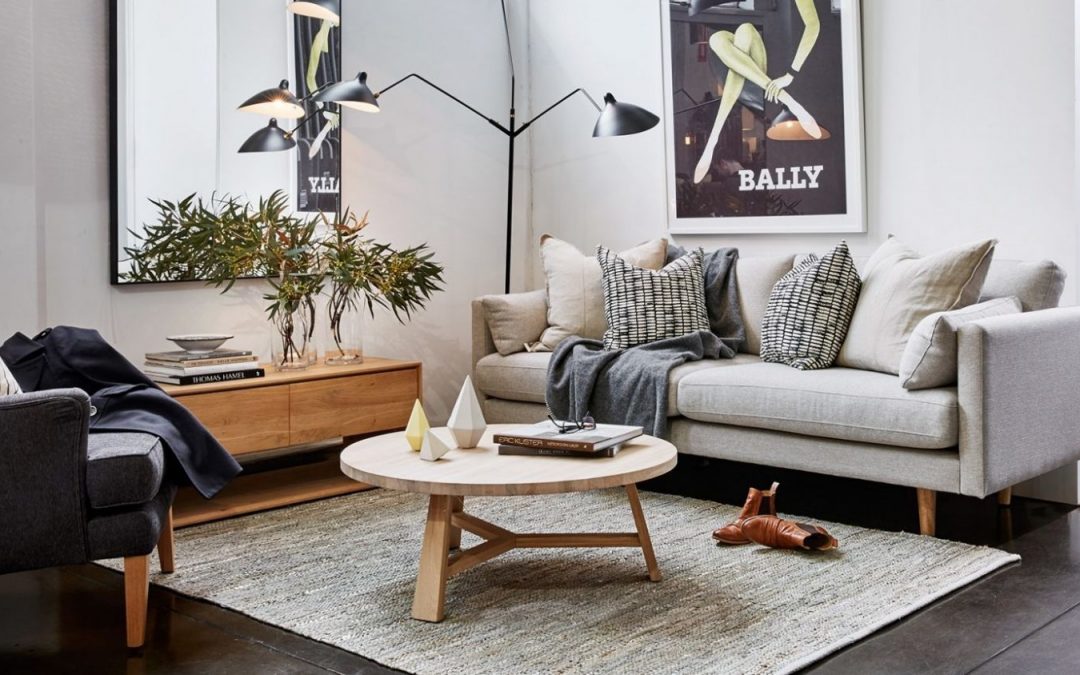Living rooms have come a long way since the 1960s, when the bulky old television box had usurped the fireplace as the centre of family downtime and hardboard was blithely nailed over period details.
Today’s living spaces are going through yet another evolution and the latest trends in design reflect how new priorities – and new technologies – are changing the way we put our feet up at the end of the day.
Trend #1
Thinking outside the box

The relatively recent introduction of a ‘media room’ into many homes is a byproduct of the modern open-plan living space and its need to hark back to the pre-TV ‘sitting room’, a place for chat and background music. City-dwellers rarely own enough space for an extra room and the compromise sought is at the base of a living room trend that (metaphorically at least) turns the TV’s volume down.
“For decades the television has been a staple in the home and back in the old days it was a way to flaunt wealth and status,” says US-born interior designer Lorena Gaxiola. “In the past five years we’ve experienced amazing advances in technology that our TV staple has had to adapt to.”
Sydney-based architectural firm Arque tries to consider the TV’s “place within the hierarchy of the space”.
“The TV shouldn’t be hung above a fireplace, it should be offset from a central position and kept low in the room,” says Arque partner Emma Rees-Raaijmakers.
“TVs were a central piece of furniture 50 or even 10 years ago but now we feel they shouldn’t overpower the space; the space should remain flexible – a place for watching your latest series on Netflix, yes, but also a space for conversation. We create spaces where you can actually switch off and feel removed from technology without removing it entirely.”
While Gaxiola talks of the James Bond-like method of concealing the TV behind a mirror, a technology used in many luxury hotels, she’s also a fan of Samsung’s The Frame TV, a thin screen that can be installed on a tripod-like base “which becomes an artful piece for those with a minimalist design style”.
Samsung’s newest model the QLED is slimmer than ever, with ‘slim-fit’ wall mounts that let the TV hang flush to the wall. A new feature called One Clear Connect means there is only one very thin cable that runs up to 15 metres to a small control box, which connects it to the other devices.
Hass Mahdi, head of audio visual at Samsung’s Consumer Electronics division, says: “Historically when someone is designing a living space, they’re restricted to placing the TV where the antenna cord and power cable are. We’re unlocking freedom in terms of interior design.”
The ‘floating’ TV then becomes virtually invisible via Samsung’s Ambient Mode, a screen mode that can render it chameleon-like as it takes on the colour or wallpaper pattern behind it.
“The opportunities are endless and you’ve also got the flexibility of how you want that displayed,” says Mahdi. “One single image of your favourite artwork, a triptych configuration or a grid of family photos. It can also feature things like time, calendar, weather and a news content ticker.”
Trend #2
For the long haul

More of a movement than a trend, the search for more sustainability in the home comes on the back of an era of ‘disposable decor’. Emma Rees-Raaijmakers and Suzanne Green of Arque returned from this year’s Milan furniture fair encouraged that sustainable design was “front and centre”.
Says Rees-Raaijmakers; “We assist our clients in making informed purchases when it comes to furniture and feature lighting for their living rooms. You have to know where your products come from and how they are produced.”
They suggest saving for investment pieces rather than quick-fixing with disposable trends.
“Emerging now is an increasingly present middle market between the high-end European brands and poorly made furniture that has flooded the market in the last decade,” says Rees-Raaijmakers.
“Locally designed and made furniture and lighting by leading Australian designers are very competitively priced and have shorter lead times as they’re often in stock. Better still they tell real, meaningful personal stories.”
Trend #3
Colour your world

“There is no denying it, colour is back,” says Richard Misso, creative director at The Stylesmiths, “and the living room is the perfect place to inject colour via paint or accessories like cushions and rugs. The trick to working with colour is to play with fabric and paint swatches to create a palette that works harmoniously, hopefully eliminating costly mistakes.”
The team at Arque sensed a zeitgeist of “playfulness” and colour at the Milan furniture fair. “The message we took away is don’t be afraid to introduce colours – green, blue, terracotta, peach – and introduce visual interest through a richer, tactile palette of leather, felt, walnut… Also don’t be afraid of asymmetry in softer, organic forms.”
More and more, designers are hearing their clients’ calls to create living spaces that are versatile and characterful, with a return to more formal furniture layouts with feature armchairs and footstools, and signature pieces such as floor lamps and pendants or striking side tables.
“Forget the oversized coffee table and down light,” says Rees-Raaijmakers, “it’s about spaces that are intimate, moody and textural.”
For the original article click here: https://www.domain.com.au/living/an-experts-guide-to-2018-and-2019-living-room-trends-20180618-h11idh-751101/


